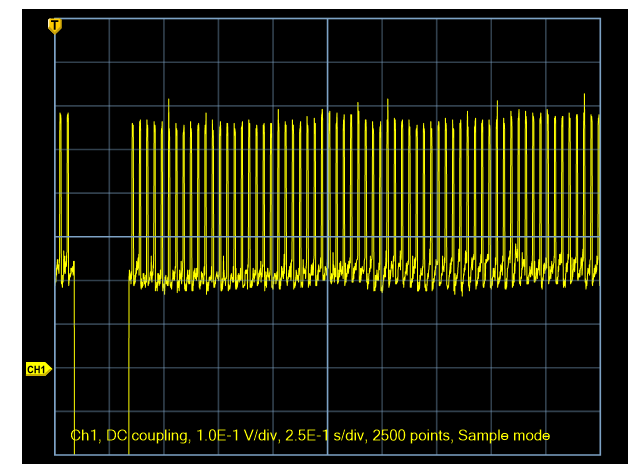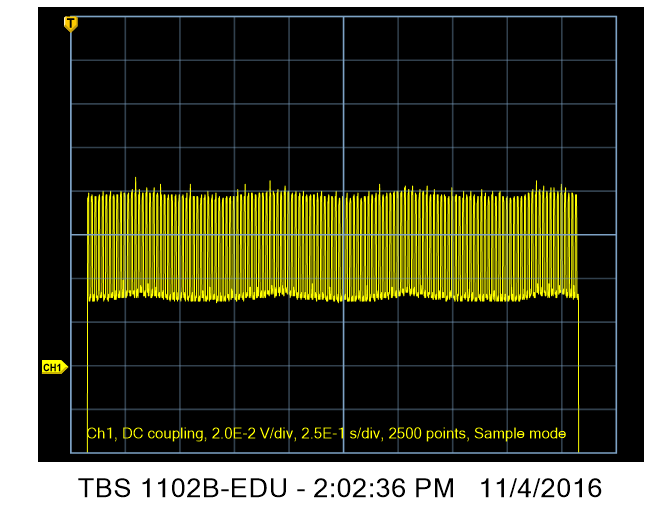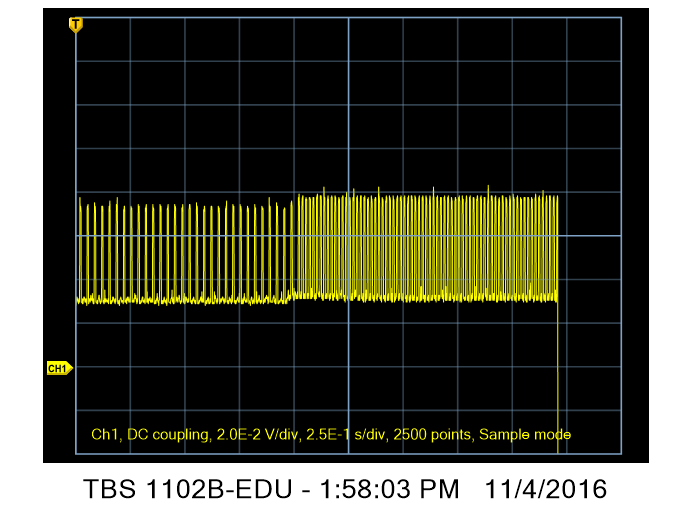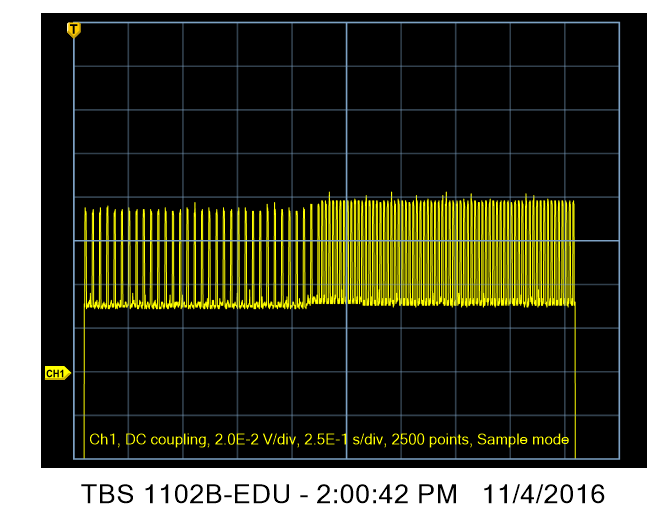This is a continuation in a series of posts on power consumption in the Sony a7RII. The more recent incarnation of the series starts here.
About the question in the post title: in a word, no. In three, somewhat more accurate words, hardly at all. In order to create a worst-case test, I told the camera that it had a 400 mm lens attached, but I had a 24 on it. So I could wave it around pretty easily. Then I triggered the oscilloscope, and after a second or so, picked up the camera and started waving it around.
Here’s what I saw (time is from left to right, and current is the vertical axis):
Ignore the part of the trace before it drops off the screen. Until a little past the left/right center of the image, the camera was still. IBIS was making some small corrections, as indicated by the variations in the lower parts of the trace. As I pointed out in the last post, the times of higher current draw are associated with the live view feature of the camera. On the right side of the screen, when I’m moving the camera, the current when the camera is not refreshing the live view varies more. Looking at the Keithley 2100 DMM set to average 100 current readings, it looks like IBIS can draw maybe 20 extra milliamps, and it usually is less than that.
One less thing to worry about.
Update 11/4:
Using the techniques that I describe here, I’ve gotten less noisy results.
Here’s what you see when you wave the camera around with IBIS on. The additional small current draw affects both the peaks and the valleys in the scope trace, as you would expect, since it is unlikely that the refresh rate of the live view display and the updating of the voice-coil motors that drive the IBIS occurs in synchrony.
What about IBIS power consumption when the camera is static? Here’s what you see when you half depress the shutter button, with IBIS on and IBIS off, but don’t move the camera:
IBIS on:
IBIS off:
If there’s a difference in current, it’s very hard to see, and definitely immaterial.




The camera seems to use electromagnets to centre the sensor; when the camera is switched off, the sensor moves around freely. I suspect that’s why you don’t see huge differences in current draw.
Yes, the camera uses a voice-coil actuator, just like most moving head disk drives. The question was how much juice does it take to power the VCA. Answer: not much.
“The question was how much juice does it take to power the VCA”
The question I read was — “Is IBIS costing you battery life in your Sony a7RII?”
My point was that the answer is yes but because IBIS costs battery life whether it’s “enabled” or “disabled”, it’s difficult to determine just how much current it draws. Unless I’ve misunderstood something, you have measured the current draw difference between the different states, but not the entire rig itself.
It is interesting that it doesn’t use any extra power worth noting while in the “enabled” state though. Thank you for testing. Excluding tripod usage, I’ll keep it enabled.
These cameras are super efficient when we consider all of the features.
I see your point now. You are assuming that there is no low-power “parked” position with the camera on, because there isn’t when it’s powered off. That is a reasonable assumption.
Jim
You are entirely correct, and I just proved it here:
http://blog.kasson.com/?p=16289
Jim